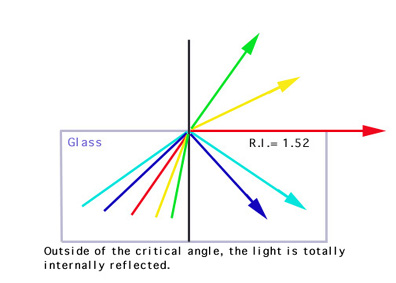Light.
There will be no refraction in the following conditions:
- Light travelling perpendicular to the boundary of the medium, even if they have different densities.
- Light passes through two mediums of the same densities.
(http://www.datasync.com/~wizard/Lasers/Refraction348.jpg)
The speed of light is fastest in vacuum or air ( As compared to other mediums )
Alternatively , the refractive index ( n ) of a medium can also be defined as the ratio of speed of light in a vacuum to the speed of light in that medium.
Equation , n = Speed vacuum / Speed medium
Refractive index of a medium must be equal to or greater than ONE. The minimum value is ONE which is the refractive index of vacuum.
The greater the refractive index , the slower the speed of light in that medium.
Critical Angle
Critical angle refers to the angle of incidence in the optically denser medium which its angle of refraction in the less dense medium is 90°.
Since critical angle occurs when light passes through an optically denser medium to a less optically dense medium, to calculate the critical angle, we need to invert the constant [ n = ( sin i / sin r ) ] to [ n = ( sin r / sin i ) ] find the critical angle.



0 comments:
Post a Comment